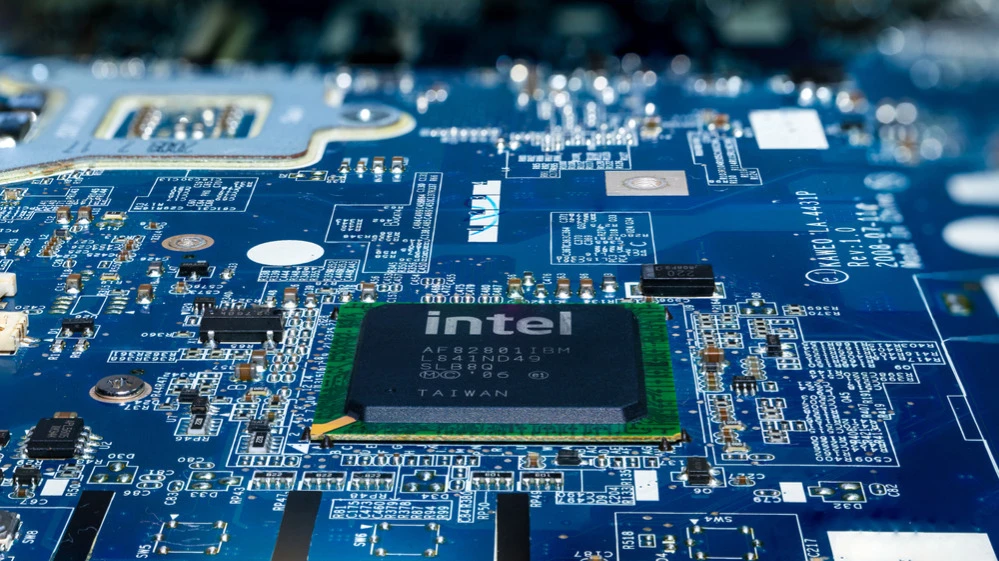Intel returned to profit and gave investors an encouraging outlook. Shares jumped
This is the company's first report since the U.S. government took a stake in it

Intel impressed investors with a solid forecast for PC processor demand in the current quarter, and reported quarterly net profit for the first time since the end of 2023 - after a string of problems and disappointing reports. The third-quarter financial results were hailed on Wall Street as a key test for the chipmaker, whose value has surged 70 percent in the past three months amid a series of large investments and a stake transfer to the U.S. government.
After the report was published, Intel's shares soared by 7%. But analysts point out that the main hope for the company's renaissance - the contract chip division - never found new customers. That's what investors will be looking at in the next reports.
Details
Chipmaker Intel expects demand for PC processors to grow. For the fourth quarter, the company expects sales in a range of $12.8 billion to $13.8 billion, according to a report released after the market closed Thursday, Oct. 23. The average - $13.3 billion - falls just slightly short of the Wall Street consensus forecast of $13.4 billion, Bloomberg notes. However, some analysts still included the revenue of Altera, which Intel spun off into a separate company in September - its revenue of $400-500 million is now not included in the overall forecast.
Intel's third-quarter revenue rose 3% year over year to $13.7 billion, with adjusted earnings of $0.23 per share. According to data compiled by Bloomberg, analysts on average expected revenue of $13.2 billion and earnings of $0.01 per share. In addition, the chipmaker reported quarterly net income for the first time since the end of 2023, Bloomberg emphasized. It reached $4.1 billion or $0.9 per share - compared to a net loss of $16.6 billion in the same period last year.
At the same time, the company said it was in an unusual situation because it had to report a loss of $0.37 per share to reflect the transfer of a stake to the U.S. government in exchange for an $8.9 billion investment. "There is limited precedent for accounting for such transactions," Intel said in a press release. And the U.S. Securities and Exchange Commission (SEC), the chipmaker said, was unable to consult on the matter in time because of the shutdown. The company warned that it may have to revise its quarterly results as a result.
Despite this, investors warmly welcomed the chipmaker's report, with its securities jumping more than 7.9% in extended trading.
What else the chipmaker reported
Intel says demand for its chips has outstripped supply - and that trend is expected to continue next year. Product division revenue totaled $12.7 billion, up 3% from last year. Of that, $8.5 billion came from the Client Computing Group (PCs and notebooks) and $4.1 billion came from data center processors, which recorded a year-over-year decline of 1%. The company hopes that its partnership with Nvidia will help revitalize its business in the server processor segment.
Investors are keeping a close eye on Intel Foundry, a contract business that manufactures chips for third-party customers. That business requires $100 billion in investment but still lacks an anchor customer, CNBC notes. Intel began manufacturing its most advanced chips in Arizona this past quarter, expecting that the technology to produce them would attract new customers. So far, Foundry's results are weak: the division's revenue in the third quarter amounted to $4.2 billion - 2% less than a year earlier. At the same time, all of it came from internal orders: Intel uses Foundry's fabs to produce its own chips. The division's operating loss amounted to $2.3 billion. Analysts expected a loss of $2.2 billion, notes Yahoo Finance, but this result is better than a year ago: then the company reported a loss of $5.8 billion.
Intel said its workforce has shrunk to 88,400 from 124,100 a year ago.
Context
Intel's new outlook indicates the company is moving in the right direction after a volatile year, Bloomberg writes. In a matter of months, new CEO Lip-Bu Tan gained support from the U.S. government, which received a 10 percent stake in the manufacturer. In addition, the company was supported by chipmaker Nvidia, which invested $5 billion, and Japanese conglomerate SoftBank with an investment of $2 billion. Intel shares have risen 90% since the beginning of the year, with the main growth began in August, when it became known about the state participation.
Intel has thus gone from one of the worst representatives of the semiconductor index of the Philadelphia Stock Exchange to one of its leaders, Bloomberg notes. Nevertheless, doubts remain as to whether the company will be able to produce products that will be in demand among customers again, the agency warns.
Intel's results were cause for "cautious optimism," but going forward "all investor attention will be on the Foundry division," Creative Strategies chief analyst Ben Bajarin told Yahoo Finance.
This article was AI-translated and verified by a human editor
